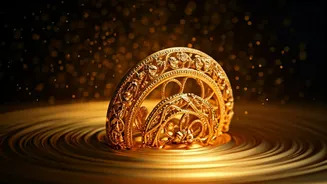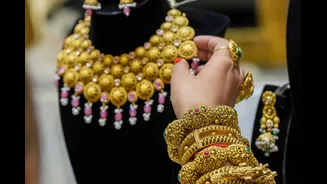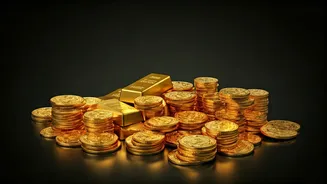Gold's Purity Explained
Gold's value is determined by its purity, typically measured in carats and expressed as a percentage. Pure gold, known as 24-carat gold, is extremely soft
and unsuitable for crafting durable jewellery. To make it more resilient, goldsmiths mix it with other metals like copper, zinc, silver, or cadmium. This addition of other metals lowers the purity, resulting in 22-carat or 18-carat gold. This reduction in purity not only impacts the final product's value but also highlights the complexity of gold valuation, which involves assessing its market price and the amount of gold lost during the manufacturing process. The amount of gold lost during jewellery making directly influences the overall value and can lead to financial considerations for consumers and investors alike.
The Wastage Factor
A significant loss occurs during jewellery making. Goldsmiths, like Santosh from Warangal, Telangana, estimate that about one gram of gold is lost for every ten grams of 22-carat gold used. This wastage occurs even though consumers pay for the entire amount of gold they provide. For example, if you provide 10 grams of pure gold to create a chain, you effectively lose one gram during the process. This lost gold is due to various factors, including the addition of other metals and the melting process. When exchanging jewellery, the presence of hallmarks makes a difference, and the amount deducted during conversion to 24-carat gold is typically less, around one gram. This understanding highlights the importance of being aware of the process and its implications, particularly given the rising value of gold in the market.
Melting for Investment
From an investment perspective, melting gold jewellery into pure gold biscuits often proves to be a more financially sound strategy. This approach eliminates making charges and yields purer gold, enhancing its overall value. However, it's crucial for consumers to be aware of the implications of gold wastage during jewellery creation and exchange. Goldsmiths caution that a lack of awareness about these calculations can lead to financial losses, particularly when the price of gold is high, at around Rs 14,000 per gram. The decision to invest in jewellery versus pure gold should be carefully considered, keeping in mind the hidden costs and potential for loss during the jewellery-making process. The purity and weight of the final product are vital considerations for those seeking to maximize their investment returns.
Gold’s Cultural Role
In India, the demand for gold remains substantial, especially for weddings and festive occasions, making it an almost essential purchase. Currently, the price of one tola of gold exceeds Rs 1.20 lakh, reflecting its high value and cultural significance. This widespread demand contributes to the continuous circulation of gold within the economy, influencing market dynamics. Despite the high costs and hidden losses, the desire for gold remains strong, intertwined with cultural traditions and celebrations. The ongoing preference for gold in India ensures that the jewellery-making industry continues to thrive, even while it navigates issues of wastage and purity. The high price tag of gold also reflects the economic aspects, underlining its status as a valuable commodity and investment tool.













